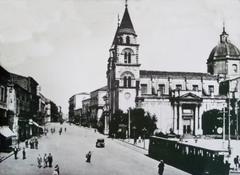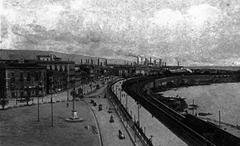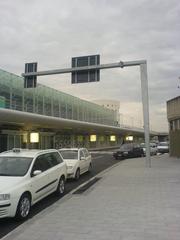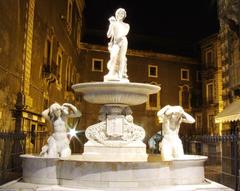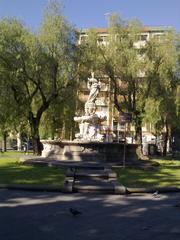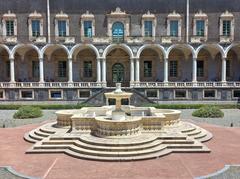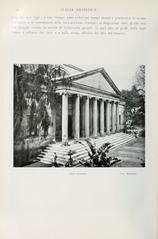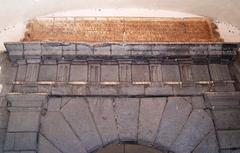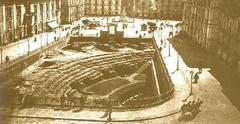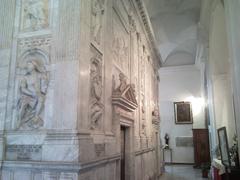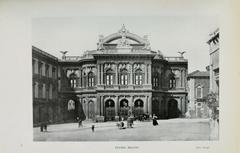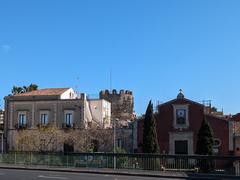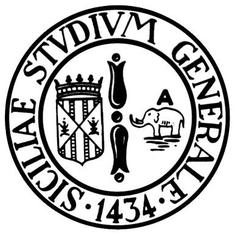Zoological Museum of Catania: Visiting Hours, Tickets & Guide to Catania’s Historical Sites
Date: 04/07/2025
Introduction
Nestled in the university district of Catania, Sicily, the Zoological Museum (Museo di Zoologia e Casa delle Farfalle) is a renowned natural history institution that offers a fascinating journey through the island’s biodiversity, scientific heritage, and museological innovation. Established in 1853 by Professor Andrea Aradas, it stands as Sicily’s oldest zoological museum, featuring over 20,000 specimens of mammals, birds, insects, marine life, and fossils. The museum’s modern, open-plan exhibition spaces, interactive educational programs, and accessible design make it an essential destination for students, researchers, families, and travelers exploring Catania’s cultural and historical landscape. This detailed guide provides all the information you need on visiting hours, ticket prices, accessibility, exhibition highlights, and practical travel tips for optimizing your visit to the Zoological Museum and nearby historical sites. For the most current updates, consult the University of Catania official museum portal and the Museo di Zoologia e Casa delle Farfalle.
Table of Contents
- Introduction
- History and Foundation
- Collections and Scientific Contributions
- Educational Role and Public Engagement
- Architecture and Institutional Setting
- Visiting Information: Hours, Tickets, Accessibility
- Museum Layout and Facilities
- Exhibition Highlights
- Practical Tips and Nearby Attractions
- FAQ: Common Visitor Questions
- Visuals and Media Suggestions
- Conclusion
- References and Useful Links
History and Foundation
The Zoological Museum of Catania was founded in 1853 as part of the University of Catania’s commitment to advancing natural sciences (University of Catania). Professor Andrea Aradas, a prominent Sicilian naturalist, established the museum with an initial focus on cataloging the island’s diverse fauna. Early acquisitions included endemic species, such as the Sicilian wolf (Canis lupus cristaldii) and Sicilian shrew, alongside Mediterranean marine collections. The museum’s foundation marked a pivotal moment in Sicilian scientific culture and remains a cornerstone of the region’s zoological research (Museo Zoologico “A. Aradas”).
Through the 19th and 20th centuries, the museum’s collections expanded via academic expeditions, private donations, and exchanges with other European institutions. It became integral to the University’s biology and natural sciences programs, surviving wartime challenges and later undergoing renovations to modernize its exhibition spaces and ensure specimen preservation (Dipartimento di Scienze Biologiche, Geologiche e Ambientali).
Collections and Scientific Contributions
Today, the museum houses over 20,000 specimens, making it a vital scientific and educational resource (Museo di Zoologia, Università di Catania). Collection highlights include:
- Sicilian and Mediterranean Endemics: Rare and extinct species, notably the Sicilian wolf and shrew.
- Ornithology: Over 2,000 bird specimens, with a focus on migratory species in the Mediterranean flyway.
- Entomology: Extensive insect collections, including the renowned Briganti and Ragusa beetle collections.
- Marine Biology: Specimens from the Ionian Sea, such as fish, mollusks, and crustaceans.
- Butterfly House (Casa delle Farfalle): A tropical glasshouse exhibiting live butterflies in a naturalistic setting (currently under renovation; check for reopening updates).
- Fossils and Human Evolution: Displays tracing primate origins and the development of Homo sapiens.
The museum continues to contribute to research in taxonomy, conservation, and environmental sciences, providing a reference point for Mediterranean biodiversity studies (Museo di Zoologia e Casa delle Farfalle).
Educational Role and Public Engagement
The Zoological Museum actively supports the University’s educational mission, offering hands-on experiences, guided tours, lectures, and workshops for students and the public (University of Catania – Museums). Its outreach programs include interactive exhibits and school partnerships to promote environmental awareness and scientific curiosity.
Architecture and Institutional Setting
The museum is housed in an elegant Art Nouveau building, part of the historic University of Catania complex—one of Italy’s oldest universities, founded in 1434 (University of Catania – History). Recent renovations have created open, barrier-free exhibition spaces, enabling close interaction with the displays and ensuring accessibility for all visitors.
Visiting Information: Hours, Tickets, Accessibility
Address: Via Androne 81, 95124 Catania, Italy (some collections/exhibits may be at Via Lago di Nicito, 38b; confirm exact location via the museum website).
Opening Hours (as of July 2025):
- Tuesday to Saturday: 9:00 AM – 5:00 PM
- Closed Sundays, Mondays, and public holidays
- Always check the official website for updated hours
Ticket Prices:
- Adults: €5
- Reduced (students, seniors): €3
- Children under 6: Free
- University of Catania students and staff: Free
- Guided tours: Available upon request; group rates possible
Accessibility:
- Wheelchair accessible with ramps and wide aisles
- Barrier-free, open-plan exhibition spaces
- Restrooms and basic amenities available
- Most labels in Italian and English; staff generally speak English
Directions: Easily accessible by public transport; short walk from city center and main historical sites (Traveling Italian). Car parking is limited; public transport or taxi recommended.
Museum Layout and Facilities
- Exhibition Halls: The main exhibition space is a 230 m² Art Nouveau hall, featuring open, glass-free displays of mammals, birds, and marine life.
- Auditorium: Seats up to 80 for lectures and events.
- Restrooms: On-site for visitors.
- Cloakroom: Limited availability; travel light.
- Gift Shop: No dedicated shop, but educational materials may be available at the university bookstore.
- Food/Drink: No café on-site; several options nearby.
Exhibition Highlights
- Menelik the African Elephant: Gifted by Emperor Menelik II of Ethiopia in 1889; one of the museum’s most iconic specimens.
- Sperm Whale Skull and Vertebrae: Suspended from the ceiling, originating from a whale beached in Sciacca in 1916.
- Large Mammals: Polar bear, elk, and tiger specimens, emphasizing conservation.
- Ornithological and Primate Collections: Birds from the Auteri collection and primates displayed on modern structures.
- Italian Fauna Platform: Crescent-shaped area dedicated to native Italian species.
- Coleopterological (Beetle) Collection: Over 30,000 beetles, mainly Staphylinidae.
- Butterfly House: Tropical glasshouse (currently under renovation as of July 2025).
Practical Tips and Nearby Attractions
- Typical Visit Duration: 1.5 – 2 hours; allow more time for guided tours or families with children.
- Photography: Non-flash photography allowed in most areas; no tripods without permission.
- Best Time to Visit: Weekday mornings for a quieter experience.
- Group Visits & Tours: Book in advance, especially for English-language tours.
- Nearby Attractions:
- Via Etnea: Main shopping and dining street.
- Piazza Duomo: Catania Cathedral, Fountain of the Elephant.
- Roman Amphitheater: Ancient ruins in the city center.
- Villa Bellini: Historic public gardens.
- Monastero dei Benedettini: UNESCO-listed monastery complex.
- Catania Botanical Garden: Ideal for combining with the museum visit (Savoring Italy).
FAQ: Common Visitor Questions
Q: What are the museum’s opening hours?
A: Tuesday to Saturday, 9:00 AM – 5:00 PM. Closed Sundays, Mondays, and public holidays. Check the official website for updates.
Q: How much are tickets?
A: Adults €5, reduced €3, children under 6 free; University students and staff enter free.
Q: Is the museum wheelchair accessible?
A: Yes, the museum is fully accessible.
Q: Are guided tours available in English?
A: Yes, upon request and with advance booking.
Q: Can I take photos inside the museum?
A: Non-flash photography is permitted in most areas.
Q: Is the Butterfly House open?
A: Currently under renovation (as of July 2025); check the museum website for reopening updates.
Visuals and Media Suggestions
- Exterior and Interior Photos: Use alt text such as “Zoological Museum of Catania entrance” and “Exhibits inside the Zoological Museum of Catania.”
- Highlighted Specimens: Sicilian wolf, Menelik the elephant, migratory birds, beetle collections.
- Interactive Maps: Show museum location relative to Catania historical sites.
- Virtual Tours: Available on the official museum website.
Conclusion
The Zoological Museum of Catania is a must-see destination for anyone interested in natural history, culture, and scientific discovery. Its extensive collections, educational programs, and central location make it an ideal addition to your Catania itinerary. Whether you’re a casual visitor or a dedicated researcher, the museum offers an engaging and accessible experience that highlights the wonders of Sicily’s biodiversity.
Plan your visit today: Check the museum’s official site for current hours, ticketing, and special events. For interactive guides and up-to-date travel information, download the Audiala app and follow us on social media with #ZoologicalMuseumCatania.
References and Useful Links
- Museo Zoologico “A. Aradas”, 2025, University of Catania (https://www.dipbiogeo.unict.it/it/dipartimento/museo-zoologico-andrea-aradas)
- Museo di Zoologia e Casa delle Farfalle, 2025, WhichMuseum (https://whichmuseum.com/museum/museo-di-zoologia-e-casa-delle-farfalle-catania-38695)
- University of Catania – Museums, 2025, University of Catania (https://www.unict.it/it/ateneo/musei-e-collezioni)
- Zoological Museum of the University of Catania, 2025, University of Catania (https://www.unict.it/it/ateneo/musei/museo-di-zoologia)
- Museo di Zoologia, Università di Catania, 2025, Museo di Zoologia Official Site (https://www.muzoo.unict.it/en/museum/collections)
- Traveling Italian, 2025, Catania Travel Guide (https://www.travelingitalian.com/blog/catania-travel-guide/)
- Savoring Italy, 2025, Catania Italy Guide (https://www.savoringitaly.com/catania-italy/)
- Audiala App, 2025, Interactive Cultural Guides (https://audiala.com)
